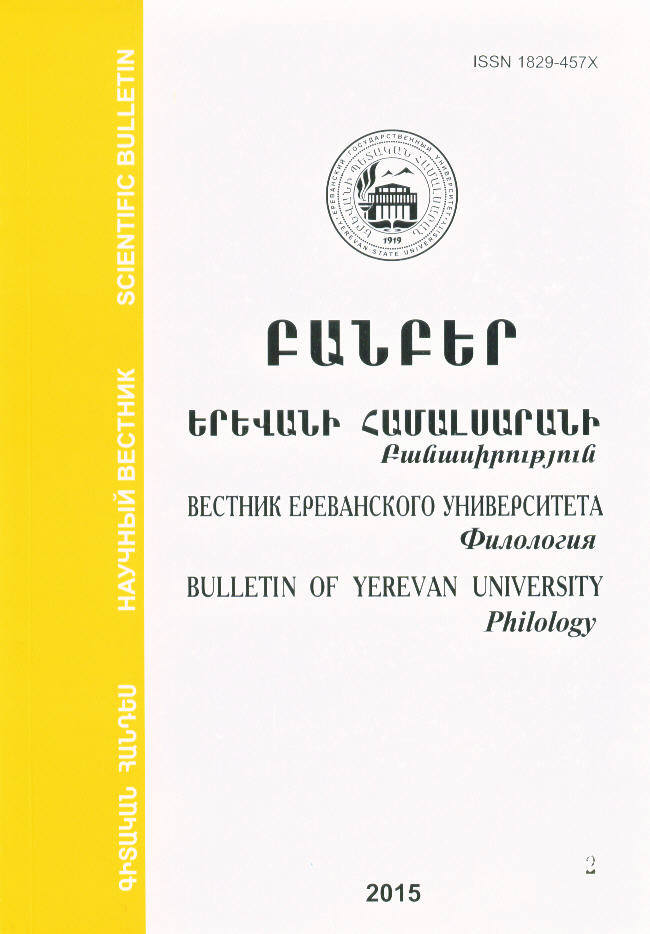On the Question of the Origin of the Diphthong ւ ո (uo) in Old Armenian
DOI:
https://doi.org/10.46991/BYSU:B/2015.6.2.014Keywords:
unstressed (non final) syllable, the rising diphthong, the bisyllabic sequence, phonetic development, synchronic and diachronic data, the intervocalic *yAbstract
As known, many scholars regard ւ ո (cf. որդւոյ “of the son”) in Old Armenian as a sequence wo. As to its origin, it is generally supposed that *y in the original sequence *iyo was partially assimilated to *o, and later on, *i in unstressed (non final) syllable was lost (i.e. *iyo > *iwo >wo). According to another view, ւ ո as well as ուո in Old Armenian, represented the rising diphthohg uo. The thorough examination of the respective synchronic and diachronic data makes it clear that neither ւո and ուո in Old Armenian could reflect the same phonological reality, nor could ւո have originated through the alleged phonetic change *iyo(*իյո) > *iwo(*իւո) >wo(ւո) – as evidenced by the graphic difference between ւո (որդւոյ) and ուո (պատուոյ), on the one hand, and the phonetic development w (ւ) > u (ու) between a consonant and a vowel, yielding bisyllabic sequences u-o(ու-ո), u-a(ու-ա), u-e(ու-ե) in pre-written Armenian (cf. *պատիւոյ [*patiwoy] >*պատւոյ [*patwoy] > պատու-ոյ [patu-oy]), on the other hand. The occurrence of ւ between a consonant and a vowel in such forms as որդւոյ, մաքւոյ can be accounted for only by the assumption that ւո in Old Armenian represented the rising diphthong uo as opposed to the bisyllabic sequence u-o(ու-ո). As far as the origin of ւո(uo) is concerned, it goes back to an earlier diphthong *io resultig, in its turn, from a bisyllabic sequence *i-o due to the loss of the intervocalic *y in the original sequence *iyo (i.e. *iyo > *i-o > *io > uo).
Downloads
Published
How to Cite
Issue
Section
License
Copyright (c) 2021 Bulletin of Yerevan University

This work is licensed under a Creative Commons Attribution-NonCommercial 4.0 International License.

